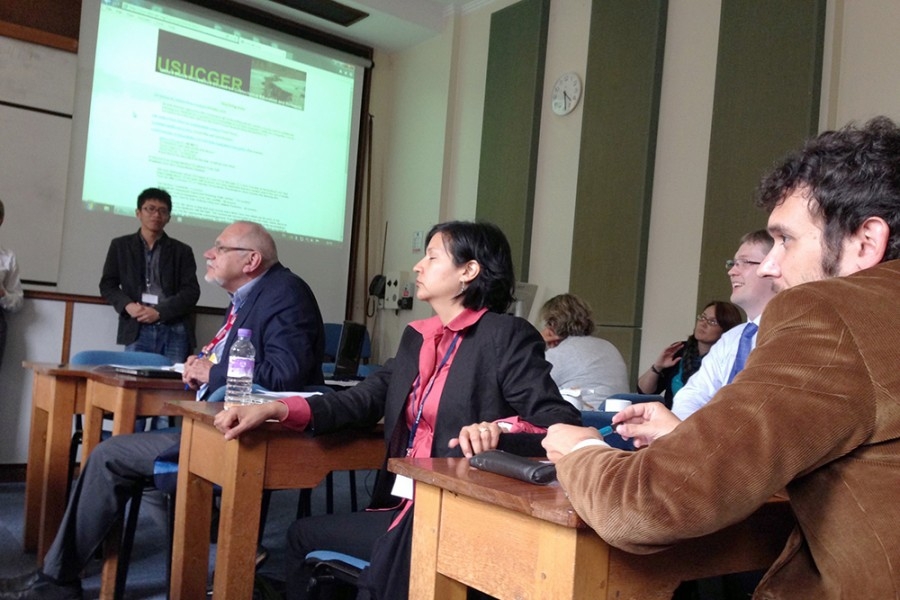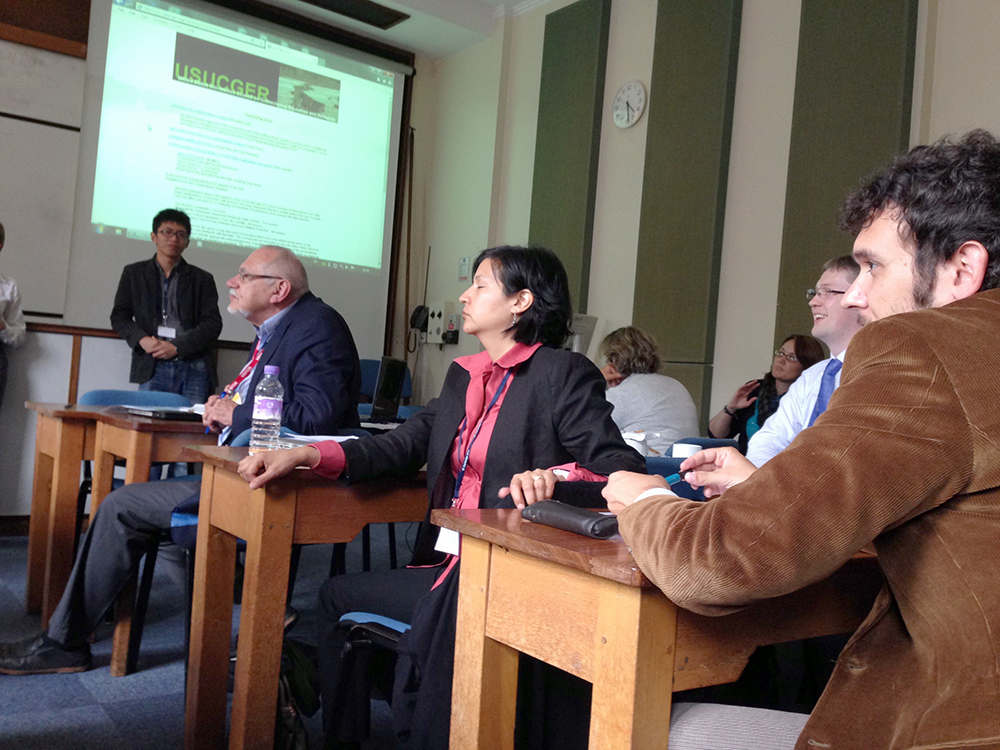
 An international group of geotechnical scholars is working to reimagine how they teach soil mechanics, hoping to close a gap between what students learn and what they actually need to know to work in the field or pursue a research career.
An international group of geotechnical scholars is working to reimagine how they teach soil mechanics, hoping to close a gap between what students learn and what they actually need to know to work in the field or pursue a research career.
The School of Civil and Environmental Engineering’s Chloe Arson is helping lead the endeavor.
“A lot of us think there’s a disconnect between what we teach and what we need for research, what we need for practice, and also some frustration about the fact that the contents of the soil mechanics course that is taught at the undergraduate level has not really changed since the Second World War or so,” said Arson, an assistant professor in the School.
She helped gather four dozen professors and doctoral students at the University of Cambridge in England this month to figure how to fix that problem and get more civil engineering students interested in studying soils and rocks.
Part of the problem is that the content of introduction to geotechnical engineering courses taught in the United States and Europe has not been updated for decades. Plus, many students take only one introductory geotechnical engineering class, and not until late in their undergraduate careers.
 |
|
| Arson | |
 |
|
| Wirth |
“Most of the interesting topics right now are taught at the graduate level,” Arson said. “Unless you already know you want to go into geotech, you’re not exposed to the most interesting things.”
“I honestly applied for the [joint] B.S./M.S. program because it gave me the opportunity to take graduate geotechnical classes that weren’t offered for undergrads,” said Xenia Wirth, a geosystems Ph.D. student working with Susan Burns. Wirth was one of the students at the Cambridge workshop. “In order to get the breadth of the undergraduate curriculum I was looking for, you actually had to apply to grad school and you had to get into the grad program, so you had to plan ahead.”
CEE students, for example, have to choose four of five available electives that span the different fields within civil engineering. Wirth said she took the soil mechanics course simply because she didn’t want to take one of the others. She didn’t know what geotechnical engineering was, but she ended up loving it. Now she’s planning to devote her life to the field and teach the next generation.
Getting more students to develop that passion is a big part of what the workshop was trying to do, Arson said.
“We do hardcore math, hardcore physics and the applications of our research are very important to humanity,” she said. “We are fighting against natural hazards. We are fighting against pollution [and] contaminant propagation. [We work on the] production of energy. What we do is very essential to society.”
The workshop included a mix of long-time, tenured professors; mid-career teachers and researchers; and graduate students. They’ll now spend the next year and a half testing new ideas for course material and projects and writing papers about whether they were successful.
Arson said they developed nine proposals to submit to the ASCE Journal of Professional Issues in Engineering Education and Practice. Organizers hope to turn those into a special issue of the journal with contributions from other scholars as well.
Arson is also putting together a preliminary report from the workshop for the National Science Foundation, which paid for U.S. researchers to attend. The report will be archived and available online by the end of the year.
Arson said the changes might already be underway, however.
“If the younger generation of scholars in our field are already thinking in the long term of how to teach, we have already had an impact.”
